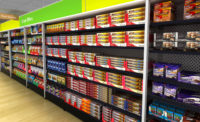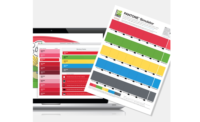Valuable Tools for the Brand Manager
Valuable Tools for the Brand Manager
By Mark Vanover
Many brand managers and retailers see packaging workflow as a necessary evil; something that others will resolve. However, those who respect the influence packaging has on a brand’s success pay much more attention to the workflow between departments. Pharmaceutical brand owners, for example, often are active participants in the project management, revision and approval processes. Correct copy placement—and the text itself—is only the start. What is the cost of a wrong barcode on press? What is the cost of incorrect legal or product use text? What is the cost of erroneous ingredient copy or dosage on the label? There are often strict legal compliance issues to consider, and these rules differ from one country to the next.
Who’s involved?
A complete, integrated workflow can fulfill vital business needs and improve profit margins for all parties involved. In package production, there are a large number of skilled subcontractors involved: graphic designers, structural designers, prepress trade-shops, printers, converters, finishing and die-makers. On the brand owner side, there are just as many players: the product development team, the legal department, marketing, purchasing and logistics. And there are distributors and retailers who handle tasks such as transportation and organization of product on the store shelves. All of this requires a packaging production workflow that optimizes communication between all parties involved: an all-digital and distributed workflow, complete with collaboration tools that ensure efficient and lossless data exchange.
The workflow
In the packaging workflow, there are two simultaneous paths to consider: graphics and structure.
The structure workflow helps define the shape and construction of the package. To win the hearts of consumers, creativity rules. But some concepts can be challenging for the preproduction process. It starts when a structural designer works with a CAD program specialized for packaging. Years ago, each iteration would require either a two-dimensional drawing or a hand-made sample. Now, versions can be sent as 3-D animated drawings, where brand managers can visualize the product from many angles—or even as it will appear on the shelf.
One of the best ways to reduce the risk of human error at this stage is to integrate CAD and graphics right from the start, notes Jan DeRoeck, Esko Graphics’ worldwide marketing director for packaging software. That way, graphic designers can review the same CAD drawings as brand managers, so they can create graphics that fit the structure. This CAD structure remains a dynamic link in the workflow of structure and graphics, ensuring that the graphic designer is aware of any change to the structural design that might subsequently affect his work. Beyond the creative aspect of the graphics, certain components, like barcodes and ingredients, are drawn from existing text and artwork databases and are placed in prescribed areas in specific sizes.
When designs are approved, the two workflows proceed to production. The graphics are sent to a prepress trade shop—or directly to the converter—where they are prepared for print. The ultimate objective is to prevent waste and prepare press plates with artwork that is both attractive and efficient. Inks and special screens are selected that will best reproduce the logo and other graphic elements. Many repetitive pieces of artwork are created on a single plate—called step-and-repeat. Proofs are made for final approval. At the same time, the CAD drawings are prepared for dies. Often samples are created on machines that cut and fold samples automatically from the CAD drawings—without the need for expensive dies. When these are approved, dies are prepared that match the repetitive layout of the artwork. Finally, the artwork is printed, cut, and perhaps scored for folding, and is shipped to be filled.
More and more, the brand owner needs to control the supply chain to understand how to drive cost out of the process and improve speed-to-market. A complete workflow can reap tremendous benefits. The brand manager who cuts merely a single day out of the time it takes to bring a product to market can gain millions in revenues.
The author, Mark Vanover, is director of marketing at Esko-Graphics North America.
He can be reached at 413.583.4100 or mrva@esko-graphics.com.
He can be reached at 413.583.4100 or mrva@esko-graphics.com.
What tools are available to the the brand owner?
Both print service providers and print buyers require workflow solutions that increase throughput and efficiencies, eliminate communication and operator error and reduce lead times and inventories. Streamlining the process can save costs by organizing packaging for many markets.
There are a number of production tools that the brand manager never sees. For example, some provide automated trapping—a method that assures colors butt up against each other on press—to compensate for press registration inaccuracies. Others support printing on any substrate, without any alterations or color shifts, providing more consistent print quality on the widest range of flexible packaging materials.
Here’s a quick review of the available tools:
Locking sights on the design site: Web-based collaboration and asset management servers allow anyone with security clearance to view, annotate and approve the job in progress. Brand managers, account managers, financial controllers and operations supervisors can all tap into the workflow’s databases to access production-critical information and processing resources.
A systems approach: A complete workflow environment supports integration with MIS, ERP and plant management systems for precise budgeting, timely backordering and the triggering of alarm phases as they occur. An effective workflow brings the ultimate in efficiency to a JIT workflow.
More power to the graphic designer: Adobe® Illustrator® is typically the designer’s tool of choice. Plug-ins exist that import the structural CAD designs into the Illustrator file. Whatever changes the structural designer makes, the graphic designer can work with the correct version of the die. The graphic designer can also use the rich content of the die-shape to get a realistic preview of the work in three dimensions. Other plug-ins automate essential production phases such as trapping and color management, avoiding costly errors and saving time.
Ship it right: Software can be integrated to help solve package design and pallet loading problems. Some programs can find the best product size, case count, case size and pallet load. Other software can provide multi-product load plans for trucks, containers and railcars. These programs can prevent companies from shipping empty space.
Putting it all together: 3-D drawings have another purpose. For the retailer, an animated folding sequence can be developed in a compact file to clarify POP assembly procedures and ensure better results.
Looking for a reprint of this article?
From high-res PDFs to custom plaques, order your copy today!









